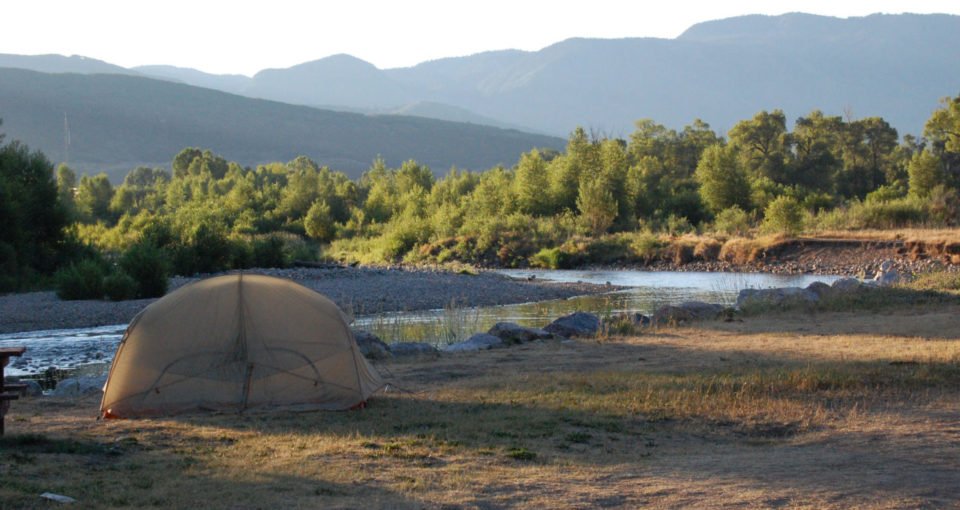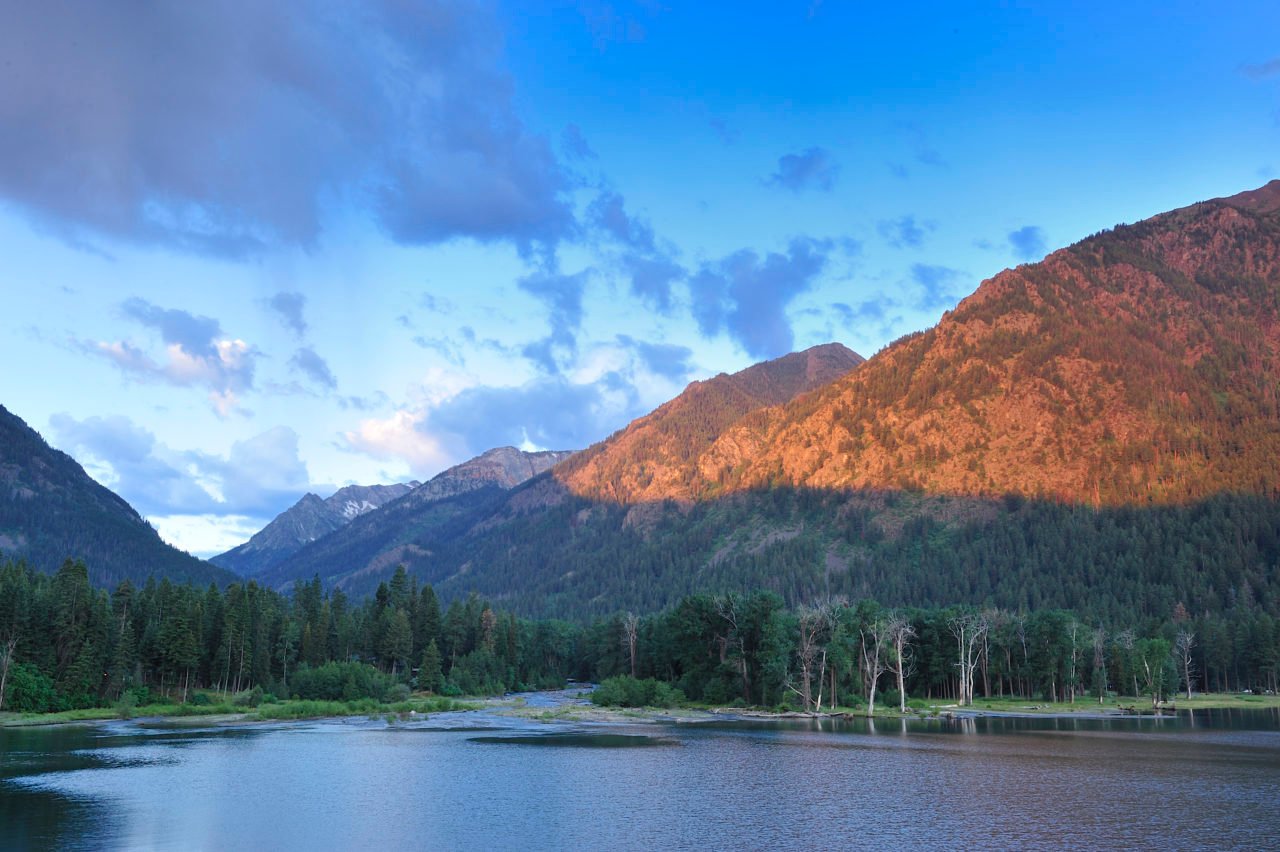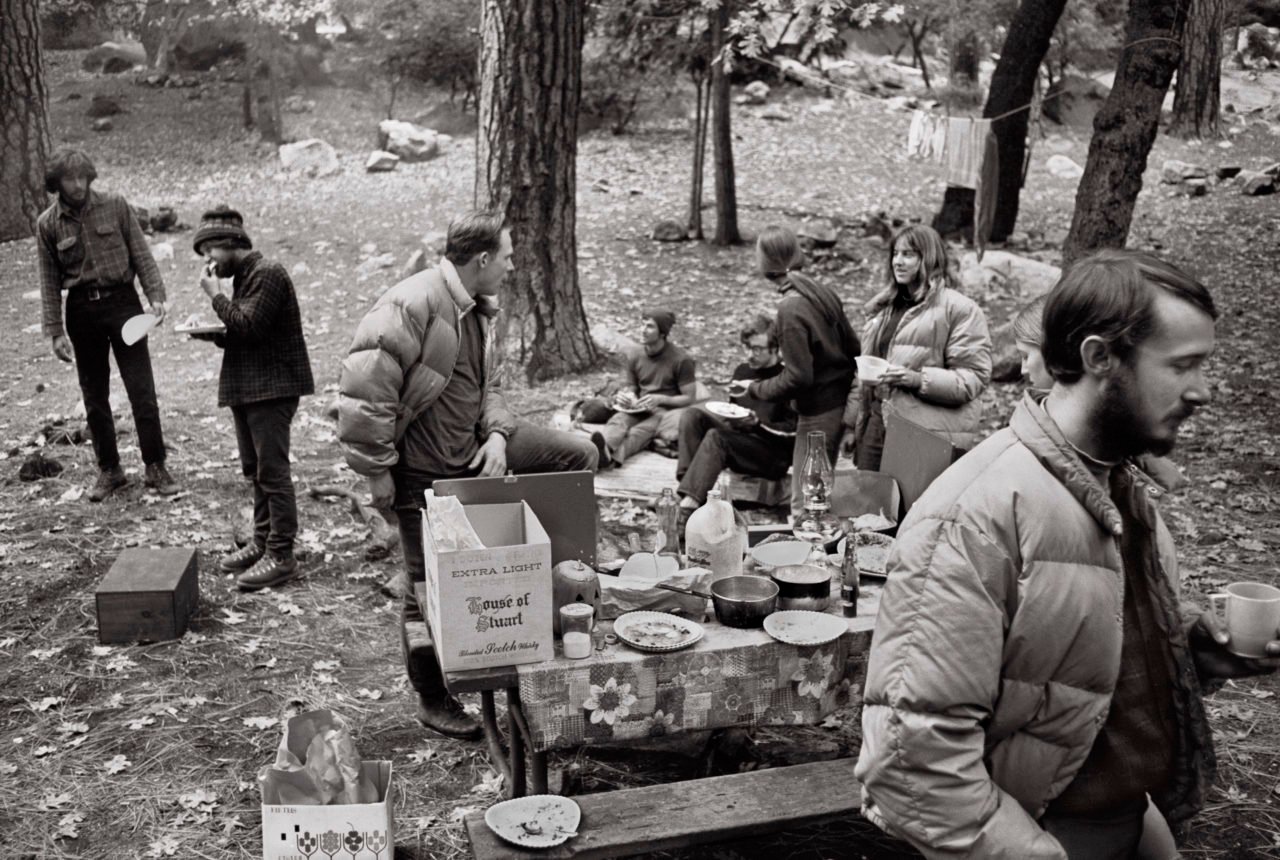Tinted and Framed: A Romantic Era for Wilderness Camping
Will Ross, March 19, 2015

They bear down on me, slicing a line through the soggy woods in their thick-rimmed glasses, mossy green jackets and moleskin shoes. Sleeping mats and bleary-eyed gazes explain the previous night’s accommodation as the quartet tip-toe across a strip of blackened asphalt and disappear into the dripping foliage beyond. There I was, completing my Sunday morning cycle ride, up to my neck in performance apparel, as this group of could-be-festival-goer-students wandered into my life, wild ramblers of the dawn.
Though camping has commonly been associated with a slower pace of life or a pastime for the aged, this group are members of a new league of young, discerning outdoor enthusiasts, exporting a sense of style to accessible pockets of wilderness.
The value of camping started to gain mainstream recognition in the US during the 1950s, just as post-War ideologies advocating a consumptive approach to happiness began to cough and splutter. While the comforts of an RV and new electrical appliances suited one conservative group of campers, ideas from the beatnik generation became manifested in the caricature of the nomad. After publishing On the Road in 1957, Jack Kerouac became a spokesperson for the beatniks and a year later, in his The Dharma Bums, the writer provided a vision of a new era of “thousands or even millions of young Americans wandering around with rucksacks”. Even if US society wasn’t prepared to enact Kerouac’s prophecy, the idea of every now and again unplugging from consumer culture began to seem a valid proposition.
In the summer of 1962, a young academic, William Burch, found cause to investigate the extent of American camping, packing up his wife and their three children to tour Oregon and carry out research at campgrounds in the state’s forests. That August, 288 families were approached in campsites by Burch and asked about their experiences of wildland recreational behaviour. Through feeling dislocated from everyday routine, Burch notes how “one leaves behind his daily commitments which tend to constrain his spectrum of alternative actions,” to then continue by pursuing new modes of activity. Time that used to be occupied by work, church and lodgings could be made available for recreation and the adoption of different sports, games and routines. In this way, a kind of ‘autotelic’ activity sets in, subplots that weave throughout the day — fishing, crossing rivers, collecting rocks or playing cards.
Had Burch extended his summer trip another 900 miles and headed south to California, he’d have come across the stirrings of an unusual camping community in Yosemite Valley. Clinging to the northern side of the Valley, right up against the Park’s famous granite faces, a group of climbers had established for themselves a permanent version of camp life. More recently, their story was told in the feature-length film Valley Uprising, winner of the Banff Mountain Film Festival Grand Prize in 2014. The film dives into this culture of late 1950s, just as Kerouac was penning his famous words and a generation of outliers began to lay the tented foundations of Yosemite as we know it.
After spending years looking through photographs and talking to over 50 climbers about their time at Yosemite’s Camp 4, directors Nick Rosen and Peter Mortimer first cover the Golden Age, a period that ran from 1955 to 1970. As well as serving as a melting pot for US counterculture during the beatnik and civil rights eras, the Golden Age saw the establishment of a way of living that hinged around achieving the major climbing feats of the day. Two climbers came to exude the spirit of the era, and at opposite ends of the spectrum — Royal Robbins and Warren Harding. Robbins, the reader and purist, Harding the drinker who, unlike his rival, used bolts to take on remarkable first ascents.
Robbins and Harding were joined by other climbers at Camp 4, world-class athletes who acted as teammates and disciples. Among them was Yvon Chouinard, who went on to found Patagonia, now one of the largest and most cultured outdoor brands, and Jim Bridwell, who helped nurture the next era of Yosemite climbing during the 1970s, the Stonemasters Era. Despite the departure of Robbins and Harding, the risk-taking spirit of Camp 4 lived on, met by mounting pressure from park authorities. But by the time the Stone Monkeys Era had begun in the late 1980s, their permanent lodgings began to be brought into question.
In an effort to control the impact of Yosemite National Park’s four million annual visitors, authorities now prevent enthusiasts from staying for more than a week at a time. Though first treated as an offence to the the dirtbag soul, climbers have come to recognise that the Park is important and useful to people less daring than themselves. Now known among campers and climbers around the world, Camp 4 has its tent-only plots in demand for at least three months in advance.
Throughout the film, a sense of brutal simplicity is made clear. The climbers knew what they wanted and in going about it with such gusto, their self-identity becomes entrenched, tethered to the dial of Yosemite Valley. By the end of the 1960s, academics Gordon Bultena and Lowell Klessig were already picking up the fact that there were extreme ends of camping. They made the distinction between “spartan” campers, those that camped in in order to be close to the challenges of nature and “convenience” campers, those that had commuted “the soft life of home out to the woods and with the travel trailers and campers meet nature on wheels.” Yet for both groups, there is the idea that personal values can by crystallised and affirmed through taking on a different perspective in the environs of a campsite.

Over time, researchers have seen how similar world views distill at different campsites. Whether one camper might want to sleep at a certain site for its amenities might be for another completely contradictory to the essence of camping. During research at a well-appointed campsite, Barry Garst, David Williams and Joseph Roggenbuck came across one camper who found things in common with others at the lodging, acknowledging the cyclical nature of return trips.
…I like seeing all the people that were here last year come in. Several couples . . . it’s kind of nice to realize that they’re still here, they’re coming in . . . re-connecting with people that you saw last summer. It’s always good to see couples come in that you’ve seen camping over the years.
Indeed, the idea of social bonding at a campground is supported by data collected by the Outdoor Foundation in 2013. Of those interviewed, 44% cited encouragement from friends and family as motivational factors in going camping. What is an option for an older generation to seek restoration is for a younger cohort an opportunity to seek out recreational endeavours. Research also points out how the suspense of everyday conversation allows families to share different types of stories when they return to their homes and set in place plans that are positive and binding. For common age groups and young professionals, camping provides a dynamic environment to germinate meaningful conversations.
Aside from the self-identification and interpersonal relevance of wild camping, other academics have looked at the way that spending time camping can be directly valuable to the individual in relation to nature. In 2007, three Fort Collins academics, Brooks, Wallace and Williams, published an intriguing study under the title, ‘Is this a one-night stand or the start of something meaningful?’, in which they recount an interview with Jon, an overnight backpacker passing through a campground with his family. Jon points out that even though urbanised environments can provide a sense of wilderness, when it comes to identifying its calling for humans, one needs to spend a few days living in the outdoors.
And it’s kind of immersing yourself in [the] fact that you’re living outdoors … you deal with whatever comes whether its great weather or bad weather or physical issues that you may be dealing with, things like that, that’s part of the challenge … once you immerse yourself in it, you realize that you become less and less separate from it. You adapt and adjust to whatever the physical conditions are of the place. I like to think that people come out of the wilderness understanding that as a species we’re totally inseparable of course from the physical environment. I’m not sure from my experience that many people grasp that.
But camping still requires us to complete a vast amount of things we do in our normal, everyday lives. We’ll try to sleep, do our ablutions and cook meals, errands that rarely come as easily as they do in the home. At camp, however, these turn into new projects, to be mastered by innate skills and tempers that can earn a camper status. These new tasks and an alternative schedule serve to introduce a new rhythm, unencumbered by the business of everyday life. Built around nature and relationships in flux, their regenerative value cannot be underestimated.

The reality is, wild camping is trending. In 2013, 40.1 million campers spent a total 597.7 million days camping in the US, an average of 14.9 nights per person (Outdoor Foundation, 2014). Among younger generations, heading from the office on a Friday with a tent and a sleeping bag is actually becoming a cool thing to do. Of the 40.1 million people that camped in 2013, 15% were between the ages of 19 and 24, an increase of one percent from 2012. The median camper is 32 years old.
Of course these numbers are good news for the outdoors industry, for those hosting trips and equipping campers. More comfortable amenities and portable gear have made rugged areas more appealing to a new breed of climbers, particularly to someone didn’t came across the activity during their childhood or adolescent years. Research by the Outdoor Foundation has also found plenty of appetite among first-time campers for choosing camping to get away from the grind of everyday life.
Still, the paradox of disconnecting from everyday comforts to resume a comparable standard of living at a campsite lingers in the background. For those disciplined enough to resist the conveniences of improved mobile connectivity in parks, the shareability of trips through the mediums of video and photo on return is a reasonable trade-off, and an immensely powerful tool for brands. If the pressing need to physically disconnect is matched by some desire to broadcast a working week punctuated by time spent in an area of natural splendour, then we just about strike even. 5.3 million photos currently reside on Instagram beneath #camping, providing enough evidence of our inclination to share an outlandish moment somewhere dreamy.
Some brands have been able to tap into this demand, leveraging Instagram to promote a kind of romantic version of camping as a lifestyle. Yet others have gone further, to provide a cocktail of inspiration and information through visual and written narratives. Launched in 2014, Terasu is one such publication, linking outdoors, gastronomy and craft from California, Japan and France in a delicious online publication (‘terasu’ means ‘to illuminate’ in Japanese). For Terasu, the task is not so much about firing out general content to do with outdoors and camping, but to configure their young audience around the ‘how’ element of adventure. Their site is broken into the simple headings, “Water”, “Earth”, “Snow”, “Gastronomy”, around which fall stories of idyllic surf spots, cabins in the mountains and scenes of gastronomic bliss. Indeed, their concept mirrors and maps many of the academic material.
Take care of what takes care of you. We are far more aware of the battery life and maintenance of our phones than ourselves. Terasu seeks to connect what we eat, how much we sleep, how we feel, how we ride, in order to reclaim an awareness of our bodies, and how we interact with the world around us.
When compared with other industries that see a flow of 40 million people per year, camping is still lacking in some efficiencies. Among the strong numbers from the Outdoor Foundation’s report, the significant ‘churn rate’ indicated that 10.5 million people camped in 2013 who hadn’t camped in 2012, while 11.0 million from 2012’s data didn’t return in 2013 (a net loss of 423,955 people). To help ensure their retention, tech tools often become useful, primarily as a reminder of a previous trip, but also to help navigate the search and discovery of a potential trip.
Launched from California in 2013 by founder Alyssa Ravasio, Hipcamp could be on the way to improving the efficiency of camping. The San Francisco startup are on a mission to allow users to browse and book campsites through a single mobile app. The site currently lists 286 parks and their 1403 campgrounds in California, Texas and Florida (16th March 2015), the kind of coverage that stands a chance of replacing the trudge through multiple websites and booking portals. Indeed, the very name of this burgeoning startup signposts a new mindset about wild camping today.
Over the last 60 years, camping has evolved with portable technologies and the growing concern about the effects of spending all our time in zones of hyper cellular and cyber activity. Though Yosemite’s climbers are relatively few in number, their minimal approach to camping has been influential, not just in the sport, but in camping among non-climbers. As academics have also found, dismantling mental and physical overheads of everyday life can have positive effects for humans who spend time in nature’s neighbourhoods.
Further Reading
- Outdoor Foundation, 2014 American Camper Report
- Brooks, J. J., Wallace, G. N., & Williams, D. R. (2007), “Is this a one-night stand or the start of something meaningful? Developing relationships to place in national park backcountry”
- Bultena, G., & Klessig, L. (1969), “Satisfaction in camping : a conceptualization and guide to social research”, Journal of Leisure Research, I, 395–409
- Burch, W. R. (1965), “The play world of camping: Research into the social meaning of outdoor recreation”
- Garst, B.A., Williams, D.R., & Roggenbuck, J.W. (2010), “Exploring early twenty-first century developed forest camping experiences and meanings”
- Williams, D. R. (2004), “Environmental Psychology: Human responses and relationships to natural landscapes”